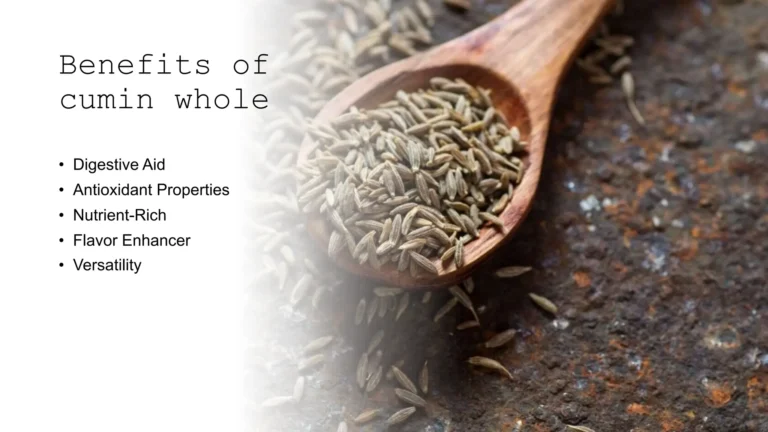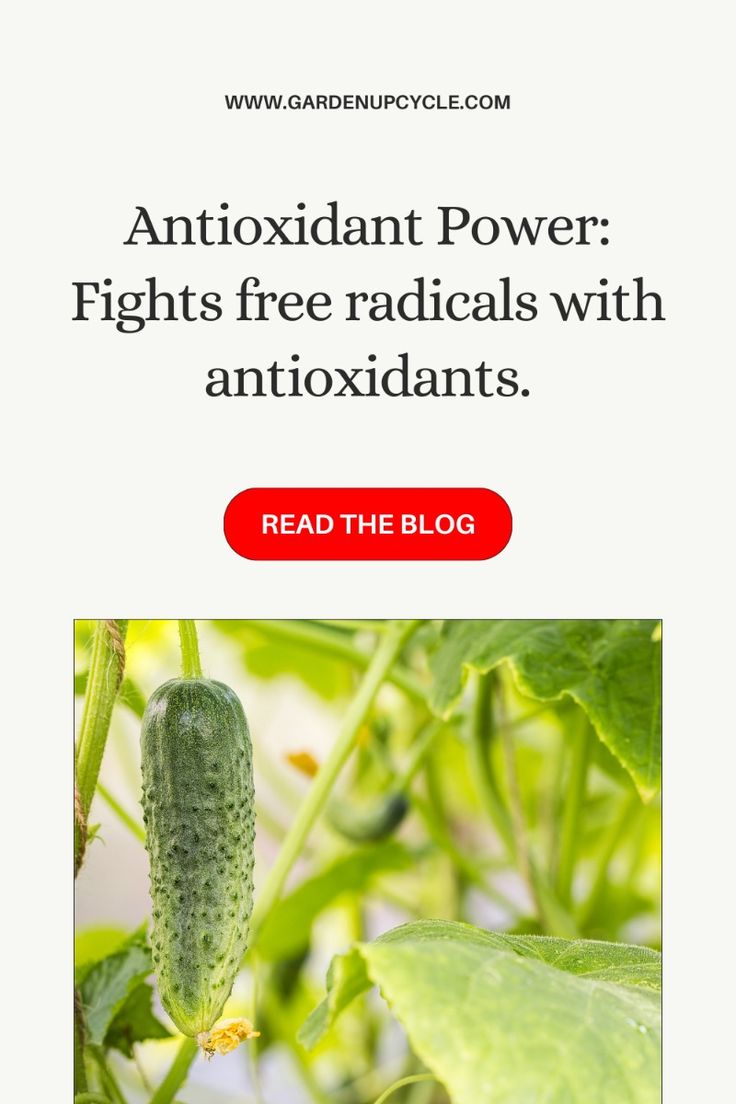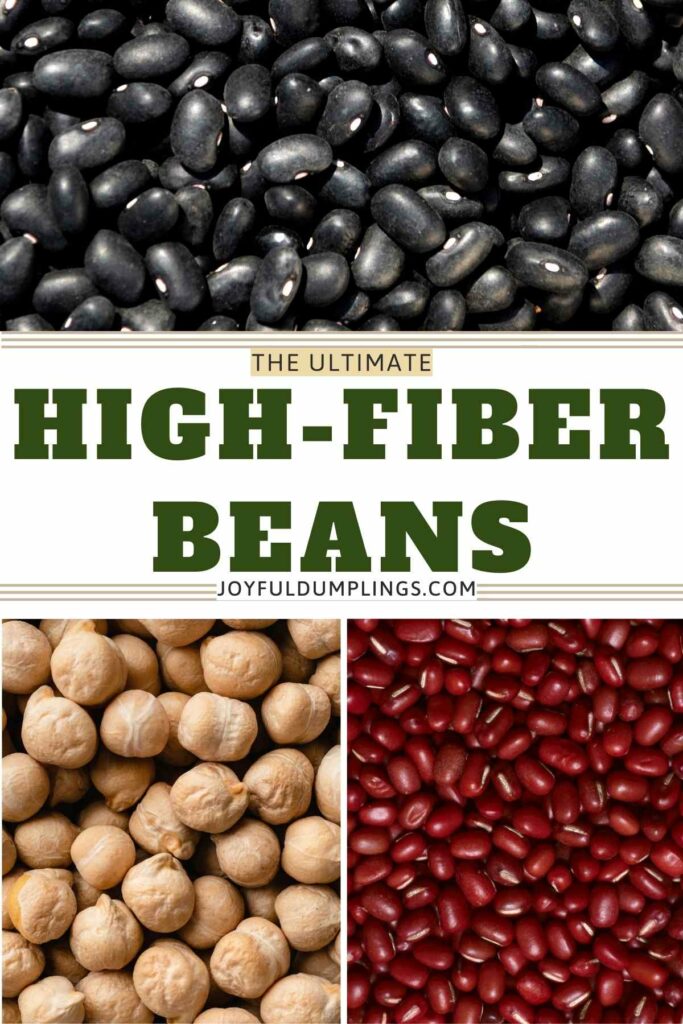Gut Health Hero: How Asparagus Feeds Your Good Bacteria
In the vast, intricate tapestry of our modern diet, where superfoods vie for attention and complex nutritional philosophies dominate discourse, it’s easy to overlook the quiet champions. These are the humble, often understated ingredients that perform extraordinary feats behind the scenes, shaping our health in profound and fundamental ways. Among these unsung heroes, one slender, verdant spear stands tall, ready to claim its rightful place in the pantheon of gut health: asparagus.
Imagine, for a moment, a bustling metropolis, not of steel and concrete, but of microscopic life. This city, vibrant and dynamic, resides within each of us – our gut. Here, trillions of bacteria, fungi, viruses, and other microorganisms coexist, forming an ecosystem so complex and influential that scientists now refer to it as our "second brain" or even a "forgotten organ." This is our gut microbiome, and its health is inextricably linked to virtually every aspect of our well-being, from digestion and immunity to mood, metabolism, and even our propensity for chronic disease.
Our story begins not with a dramatic battle or a grand quest, but with a simple, deliberate act: choosing what to eat. For those who understand the language of the gut, who appreciate the profound impact of dietary choices on this inner world, the arrival of asparagus at the market is more than just a seasonal delight; it’s an opportunity. It’s an invitation to nourish, to cultivate, to empower the tiny inhabitants that work tirelessly on our behalf.
This article delves into the remarkable journey of asparagus, transforming from a tender stalk on your plate into a vital nutrient source for your beneficial gut bacteria. We will explore how its unique composition, particularly its rich prebiotic fiber content, makes it a true "Gut Health Hero," fostering a flourishing inner ecosystem that underpins robust health. For the knowledgeable audience, we will navigate the intricate mechanisms at play, from the selective fermentation of its fibers to the production of crucial postbiotic compounds that ripple throughout the entire body.
The Unseen World Within: A Primer on the Microbiome
Before we fully appreciate the heroic role of asparagus, let us first gain a deeper understanding of the world it seeks to nurture. Our gut microbiome is a diverse community, primarily located in the large intestine. It’s a universe of approximately 100 trillion microbial cells, outnumbering our own human cells by a factor of 10 to 1, and collectively possessing about 150 times more genes than the human genome. This isn’t just a passive collection of hitchhikers; it’s an active, metabolic powerhouse.
Each individual’s microbiome is as unique as a fingerprint, shaped by genetics, birth mode, infant feeding practices, environment, medication use, and, most significantly, diet. A healthy, diverse microbiome is characterized by a wide array of microbial species, with a predominance of beneficial bacteria like Bifidobacterium and Lactobacillus. These beneficial species perform a myriad of crucial functions:
- Digestion and Nutrient Absorption: They break down complex carbohydrates and fibers that our human enzymes cannot digest, extracting additional nutrients and energy.
- Immune System Modulation: Roughly 70-80% of our immune cells reside in the gut. The microbiome plays a critical role in educating and regulating the immune system, distinguishing between harmless substances and pathogens. A balanced microbiome helps prevent autoimmune conditions and allergies.
- Vitamin Synthesis: Certain gut bacteria synthesize essential vitamins, such as vitamin K and several B vitamins, which our bodies can then absorb.
- Protection Against Pathogens: A robust community of beneficial bacteria occupies ecological niches, preventing harmful pathogens from colonizing and causing illness. They also produce antimicrobial compounds.
- Gut Barrier Integrity: They help maintain the integrity of the intestinal lining, a single-cell-thick barrier that prevents toxins and undigested food particles from leaking into the bloodstream (a condition often referred to as "leaky gut" or increased intestinal permeability).
- Neurotransmitter Production: The gut is a major site of neurotransmitter production, including serotonin, dopamine, and GABA, which profoundly influence mood, cognition, and behavior – a testament to the powerful gut-brain axis.
When this delicate balance is disrupted, a state known as dysbiosis ensues. Dysbiosis, characterized by a reduction in microbial diversity, an overgrowth of harmful bacteria, or a decrease in beneficial species, has been linked to a staggering array of health issues. These include inflammatory bowel diseases (Crohn’s disease, ulcerative colitis), irritable bowel syndrome (IBS), obesity, type 2 diabetes, cardiovascular disease, allergies, asthma, autoimmune disorders, and even neurological conditions like Parkinson’s disease, Alzheimer’s, anxiety, and depression.
Understanding this intricate ecosystem underscores the profound importance of what we feed it. It’s not just about feeding ourselves; it’s about feeding the trillions of silent partners who work tirelessly to maintain our health. And this is where our hero, asparagus, truly shines.
Enter the Prebiotics: The Microbiome’s Favorite Food
In the grand scheme of gut health, there are two primary dietary components that receive significant attention: probiotics and prebiotics. While probiotics are live microorganisms, often consumed through fermented foods or supplements, that directly add beneficial bacteria to the gut, prebiotics play a different, equally crucial role.
Prebiotics are non-digestible food components that selectively stimulate the growth and/or activity of beneficial bacteria in the colon. They are essentially the "fertilizer" for our gut garden, providing the specific nourishment that our good bacteria need to thrive, proliferate, and carry out their health-promoting functions. The key characteristics of a prebiotic, as defined by the International Scientific Association for Probiotics and Prebiotics (ISAPP), are:
- Resistance to gastric acidity, hydrolysis by mammalian enzymes, and absorption in the upper gastrointestinal tract: This ensures they reach the large intestine intact.
- Fermentation by the intestinal microbiota: They must be broken down by specific gut bacteria.
- Selective stimulation of the growth and/or activity of health-promoting bacteria: They preferentially feed beneficial microbes, rather than just any bacteria.
Unlike general dietary fiber, which provides bulk and aids regularity but doesn’t necessarily target specific microbial growth, prebiotics are highly selective. They are typically specific types of carbohydrates, most commonly oligosaccharides, such as fructans (like inulin and fructo-oligosaccharides, or FOS) and galacto-oligosaccharides (GOS).
When these prebiotics reach the large intestine, they become a feast for specific beneficial bacteria, particularly members of the Bifidobacterium and Lactobacillus genera. These microbes possess the unique enzymatic machinery required to break down these complex carbohydrates through a process called fermentation. This fermentation isn’t just about bacterial growth; it’s a biochemical symphony that produces a host of metabolic byproducts, collectively known as postbiotics.
The most significant and well-studied postbiotics are short-chain fatty acids (SCFAs), primarily acetate, propionate, and butyrate. These SCFAs are not mere waste products; they are powerful signaling molecules and energy sources that exert profound systemic effects throughout the body.
- Butyrate: Often considered the most crucial SCFA for gut health, butyrate is the primary energy source for colonocytes (the cells lining the colon). It plays a vital role in maintaining the integrity of the gut barrier, reducing inflammation, promoting healthy cell differentiation, and even inducing apoptosis (programmed cell death) in cancerous cells.
- Acetate: The most abundant SCFA, acetate travels beyond the gut to the liver, muscles, and brain, influencing satiety, glucose metabolism, and lipid synthesis.
- Propionate: Also influencing satiety and glucose regulation, propionate is primarily metabolized in the liver, where it can modulate cholesterol synthesis and gluconeogenesis.
The importance of a diverse range of prebiotic sources cannot be overstated. Just as a diverse diet feeds a diverse human, a variety of prebiotics feeds a diverse microbiome. Each type of prebiotic may preferentially stimulate different beneficial species, leading to a broader range of SCFAs and other beneficial compounds. This is where our hero, asparagus, steps onto the stage with its unique and potent prebiotic contribution.
Asparagus: A Spear of Prebiotic Power
From the ancient Greeks and Romans, who prized it for its delicate flavor and medicinal properties, to modern culinary enthusiasts, asparagus has long been celebrated. But its true superpower lies not just in its taste or traditional virtues, but in its unparalleled ability to nurture our inner ecosystem.
Asparagus is a nutritional powerhouse, boasting an impressive profile of vitamins, minerals, and antioxidants. It’s an excellent source of vitamin K (crucial for blood clotting and bone health), folate (vital for cell growth and DNA synthesis), vitamin A (in the form of beta-carotene, an antioxidant and precursor to vitamin A), vitamin C (an immune booster and antioxidant), and vitamin E. It also provides essential minerals like iron, potassium, and chromium. Beyond these, asparagus is rich in powerful antioxidants such as glutathione, quercetin, rutin, and ferulic acid, which combat oxidative stress and inflammation throughout the body.
However, the true crown jewel of asparagus, from a gut health perspective, is its exceptional prebiotic fiber content, primarily in the form of inulin and fructo-oligosaccharides (FOS). These are types of fructans, complex carbohydrates composed of chains of fructose molecules.
- Inulin: A naturally occurring polysaccharide, inulin is a significant storage carbohydrate in many plants. In asparagus, it constitutes a substantial portion of its total fiber. Inulin is highly resistant to digestion in the upper gastrointestinal tract due to the absence of enzymes capable of breaking its β-(2→1) fructosyl-fructose bonds. This allows it to reach the large intestine intact.
- Fructo-oligosaccharides (FOS): These are shorter chains of fructose molecules, often considered a subset of inulin. Like inulin, FOS are indigestible by human enzymes and are selectively fermented by beneficial gut bacteria.
The concentration of these prebiotics in asparagus can vary depending on the variety, growing conditions, and maturity, but it consistently ranks among the top sources of natural inulin and FOS. For instance, a typical serving of asparagus can provide a significant contribution to your daily prebiotic intake, making it an excellent dietary tool for modulating the gut microbiome.
Beyond inulin and FOS, asparagus also contains other types of dietary fiber, including cellulose and hemicellulose, which contribute to its overall fiber content. While these are not strictly classified as prebiotics due to their broader fermentation by various gut bacteria, they still contribute to gut motility, stool bulk, and a healthy digestive environment. The synergy of these diverse fibers, combined with its rich micronutrient and antioxidant profile, elevates asparagus to an elite status among gut-friendly foods.
The Journey of a Spear: From Plate to Microbiome
Let’s embark on a narrative journey, following a single spear of asparagus from your plate to its ultimate destination – the bustling metropolis of your large intestine. This is where its heroic transformation truly unfolds.
Phase 1: The Upper GI Gauntlet
Our asparagus spear, perhaps lightly steamed or roasted, enters the digestive tract. In the mouth, chewing begins the mechanical breakdown, but the carbohydrate-digesting enzymes (amylases) present in saliva and the small intestine are largely ineffective against the complex β-(2→1) bonds of inulin and FOS.
As it descends into the stomach, it faces the acidic onslaught of gastric juices. Yet, the robust structure of these fructans ensures their survival. They are designed to withstand this harsh environment, remaining largely intact as they pass through the stomach and into the small intestine. Here, bile salts and pancreatic enzymes continue their work, breaking down proteins, fats, and simple carbohydrates, but the inulin and FOS remain largely untouched. This resilience is a critical characteristic of a true prebiotic; it guarantees its safe passage to where it’s needed most.
Phase 2: Arrival in the Large Intestine – The Moment of Truth
Having navigated the gauntlet of the upper digestive tract, our asparagus spear, now in a more fragmented form, arrives in the large intestine. This is the promised land for prebiotics, the dense microbial city where trillions of bacteria eagerly await their sustenance.
The environment of the large intestine is anaerobic (lacking oxygen) and teeming with microbial life. It is here that the true magic begins.
Phase 3: The Microbial Feast – Selective Fermentation
Upon entering the large intestine, the inulin and FOS from the asparagus encounter their specialized consumers: the beneficial gut bacteria, particularly Bifidobacterium and Lactobacillus species. These are the unsung heroes of our inner world, and the asparagus is their preferred gourmet meal.
These specific bacteria possess unique enzymes, such as fructan hydrolases, that are capable of breaking down the complex fructan chains of inulin and FOS. No other human or general bacterial enzymes can do this with the same efficiency and specificity. This is the essence of selective fermentation. The asparagus selectively "feeds" these beneficial species, allowing them to proliferate and outcompete potentially harmful bacteria for resources and space.
As Bifidobacterium and Lactobacillus feast on the asparagus’s prebiotics, they grow and multiply, increasing their numbers and strengthening their dominance within the microbial community. This increase in beneficial bacteria is crucial for restoring balance in cases of dysbiosis or maintaining it in a healthy gut.
Phase 4: The Postbiotic Payoff – A Symphony of SCFAs
The fermentation process is not merely about bacterial growth; it’s a biochemical factory producing a wealth of beneficial compounds. As the bacteria metabolize the inulin and FOS, they release the aforementioned short-chain fatty acids (SCFAs): butyrate, acetate, and propionate. This is the ultimate payoff of our asparagus spear’s journey.
-
Butyrate: The Gut Barrier Guardian: Butyrate is the primary energy source for the colonocytes. Imagine these cells lining your colon as the protective wall of your internal city. Butyrate literally fuels their maintenance and repair, strengthening the tight junctions between them. This fortification is critical for preventing "leaky gut," where unwanted substances can pass into the bloodstream, triggering inflammation and immune responses. Butyrate also possesses potent anti-inflammatory properties, directly reducing inflammation within the gut lining. Its role in maintaining mucosal integrity and immune homeostasis within the gut is paramount.
-
Acetate: The Systemic Messenger: While some acetate is used locally, much of it travels through the portal vein to the liver and then into the systemic circulation. It can influence satiety by crossing the blood-brain barrier and signaling hunger regulation centers. It also plays a role in lipid metabolism and glucose homeostasis.
-
Propionate: The Metabolic Modulator: Propionate, like acetate, is largely absorbed and transported to the liver. Here, it can participate in gluconeogenesis (the production of glucose) and influence cholesterol synthesis. Its role in regulating blood sugar and appetite signals also contributes to overall metabolic health.
The journey of the asparagus spear concludes not with its disappearance, but with its profound transformation into these vital SCFAs. These postbiotics then become the new messengers, traveling throughout the body, orchestrating a cascade of health benefits that extend far beyond the confines of the gut.
Beyond the Gut: Systemic Benefits of an Asparagus-Fed Microbiome
The impact of asparagus-derived prebiotics and their resulting SCFAs is not confined to the digestive tract. The intricate communication networks between the gut and other organ systems mean that nourishing your microbiome with asparagus can elicit far-reaching systemic benefits.
-
Immune System Modulation: As mentioned, the gut houses a significant portion of the body’s immune cells. A healthy, diverse microbiome, fueled by prebiotics like those in asparagus, plays a critical role in shaping immune responses. SCFAs, particularly butyrate, can modulate the function of immune cells (e.g., T regulatory cells, macrophages), promoting an anti-inflammatory state and helping the immune system distinguish between friend and foe. This can lead to a more robust defense against pathogens while simultaneously reducing the risk of autoimmune conditions and allergies.
-
The Brain-Gut Axis and Mental Well-being: The bidirectional communication pathway between the gut and the brain, known as the gut-brain axis, is a powerful conduit of influence. The microbiome affects brain function through various mechanisms, including SCFA production, modulation of inflammatory pathways, and direct influence on neurotransmitter synthesis. For example, gut bacteria produce a significant amount of the body’s serotonin, a key neurotransmitter involved in mood regulation. By fostering a healthy microbiome, asparagus can indirectly support mental well-being, potentially reducing symptoms of anxiety and depression, and even influencing cognitive function. Butyrate, in particular, has shown neuroprotective effects and can influence brain-derived neurotrophic factor (BDNF), important for neuronal health.
-
Metabolic Health and Weight Management: The gut microbiome plays a crucial role in energy harvest from food, fat storage, and glucose metabolism. A diverse, healthy microbiome, promoted by prebiotic consumption, is associated with a lower risk of obesity, insulin resistance, and type 2 diabetes. SCFAs, especially acetate and propionate, influence satiety hormones and metabolic pathways in the liver and adipose tissue, contributing to better blood sugar control and potentially aiding in weight management. By optimizing energy extraction and signaling, asparagus helps the body maintain metabolic balance.
-
Anti-inflammatory Effects: Chronic low-grade inflammation is a root cause of many modern chronic diseases, from cardiovascular disease to neurodegenerative disorders. The gut microbiome is a major regulator of systemic inflammation. Prebiotics like those in asparagus, by promoting beneficial bacteria and SCFA production (especially butyrate), contribute to a less inflammatory internal environment. Butyrate’s ability to strengthen the gut barrier prevents the leakage of pro-inflammatory bacterial components into the bloodstream, while its direct anti-inflammatory signaling within immune cells helps dampen inflammatory responses throughout the body.
-
Potential for Cancer Prevention (Colon Cancer Focus): The role of butyrate in gut health is particularly significant in the context of colorectal cancer prevention. Butyrate acts as an anti-proliferative agent, inhibiting the growth of colon cancer cells, inducing apoptosis (programmed cell death) in abnormal cells, and promoting healthy cell differentiation. By fostering an environment rich in butyrate-producing bacteria, asparagus contributes to a protective milieu within the colon, potentially reducing the risk of one of the most common cancers.
In essence, by simply incorporating asparagus into our diets, we are not just adding a vegetable; we are actively engaging in a sophisticated biochemical conversation with our inner ecosystem. We are providing the essential fuel that allows our gut bacteria to produce compounds that protect our gut, strengthen our immune system, lift our spirits, regulate our metabolism, and potentially guard against chronic disease.
Practical Integration: Making Asparagus Your Gut Health Ally
Embracing asparagus as a gut health hero is both simple and delicious. Here’s how to incorporate this mighty spear into your routine:
1. Selection and Storage:
- Look for: Bright green or purplish spears with tight, closed tips. The stalks should be firm and snap crisply when bent. Avoid limp, dull, or woody spears.
- Storage: To maximize freshness and nutrient content, treat asparagus like a bouquet of flowers. Trim the woody ends (about an inch) and stand the spears upright in a glass with an inch or two of water. Cover loosely with a plastic bag and refrigerate. It can last up to a week this way.
2. Preparation and Cooking Methods:
The good news is that the prebiotic fibers in asparagus are quite stable and generally survive various cooking methods. However, overcooking can reduce some of the more delicate vitamins.
- Steaming: A classic method that preserves color, crispness, and nutrients. Steam for 3-5 minutes until tender-crisp.
- Roasting: Tossing with a little olive oil, salt, and pepper and roasting at 400°F (200°C) for 10-15 minutes brings out a wonderful caramelized flavor.
- Grilling: Similar to roasting, grilling gives asparagus a smoky char. Toss with oil and grill over medium-high heat for 5-7 minutes.
- Sautéing: Quick and easy. Sauté with garlic or other vegetables.
- Raw: Thinly shaved asparagus can be a delightful addition to salads, offering maximum nutrient retention and a unique texture.
3. Recipe Ideas to Inspire Your Gut:
- Asparagus and Lemon Risotto: A creamy, comforting dish where asparagus adds both flavor and prebiotics.
- Roasted Asparagus with Parmesan and Garlic: Simple, elegant, and packed with flavor.
- Asparagus and Goat Cheese Frittata: A perfect brunch or light dinner option.
- Asparagus Soup: A nourishing and easy way to consume a larger quantity of asparagus.
- Shaved Asparagus Salad with Vinaigrette: A fresh, vibrant side dish.
- Asparagus as a Snack: Simply blanch and enjoy with a dip, or add to a crudité platter.
4. Considerations: Start Slowly and Listen to Your Body:
For individuals unaccustomed to high-fiber or high-prebiotic diets, suddenly introducing large quantities of asparagus (or any prebiotic-rich food) can sometimes lead to temporary gas, bloating, or discomfort. This is often a sign that your gut bacteria are actively fermenting the prebiotics – a good thing! However, it can be uncomfortable.
- Start Small: Begin with smaller portions and gradually increase your intake over several days or weeks.
- Hydrate: Ensure adequate water intake, as fiber works best when well-hydrated.
- Combine with Other Foods: Integrate asparagus into balanced meals rather than eating it in isolation in very large quantities.
- Listen to Your Gut: Pay attention to how your body responds and adjust your intake accordingly. For those with specific digestive conditions like IBS, individual tolerance to fructans can vary, so personalized guidance from a healthcare professional may be beneficial.
Conclusion: Nurturing Your Inner Ecosystem
Our journey through the world of asparagus and the gut microbiome reveals a profound truth: the simplest acts of conscious eating can have the most far-reaching consequences for our health. Asparagus, often admired for its delicate flavor and seasonal charm, emerges as a true "Gut Health Hero" – a potent prebiotic powerhouse.
It’s a quiet hero, perhaps, not demanding the spotlight like some exotic superfoods, but working diligently within the hidden depths of our digestive system. Each tender spear carries within it the fuel for a thriving inner ecosystem, a catalyst for the beneficial bacteria that orchestrate so many of our body’s vital functions. From bolstering our immunity and regulating our metabolism to influencing our mood and protecting us from chronic disease, the ripples of its prebiotic power extend throughout our entire being.
In a world increasingly aware of the profound connection between diet and health, the story of asparagus serves as a powerful reminder. It tells us that nurturing our gut is not just a trend, but a fundamental act of self-care. It invites us to be mindful of the microscopic universe within, to choose foods that feed not just ourselves, but our silent partners, our inner guardians.
So, the next time you encounter these elegant green spears, remember their heroic mission. Remember the journey they undertake, the beneficial bacteria they nourish, and the cascade of health they unleash. Let asparagus be more than just a vegetable on your plate; let it be a conscious choice to cultivate a flourishing inner garden, to empower your gut, and to embrace a healthier, more vibrant life. Our gut bacteria are ready; all we need to do is provide the nourishment, one heroic spear of asparagus at a time.






